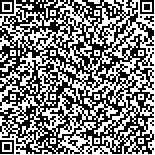| 摘要: |
| 海洋微型底栖生物包括底栖细菌、底栖微藻及底栖原生动物等单细胞原核和真核生物, 是底栖微食物网中能量传递的基础和关键环节, 在海洋生物地球化学循环过程中起着重要作用。然而我国现有的《海洋调查规范》国家标准中有关底栖生物的研究仅涉及利用网筛分选的大型和小型底栖动物, 缺少微型底栖生物调查的方法与规程, 严重制约了对海洋整体食物网能流研究, 以及微型、小型及大型底栖生物间的生态过程与作用等研究。本文提出海洋微型底栖生物调查的关键技术和规程, 包括采样和固定、底栖微藻和细菌调查技术、以及底栖原生动物调查技术, 所涉方法与规程是海洋微型底栖生物调查行业标准的核心内容。本方法与规程适用于潮间带、浅海和深海等不同生境的海洋微型底栖生物调查, 以及利用微型底栖生物进行环境监测与评价。
|
| 关键词: 微型生物, 小型底栖生物, 底栖微食物网, 海洋生物调查, 潮间带, 浅海, 深海 |
| DOI:10.11693/hyhz201101024024 |
| 分类号: |
| 基金项目:中国科学院知识创新工程重要方向项目, KZCX2-YW-417, KSCX2-YW-Z-0914 号; 国家自然科学基金项目, 40706047, 40576072 号; 青岛市公共领域科技支撑计划项目, 10-3-3-38-jh 号 |
|
| TECHNIQUES AND OPERATING PROCEDURES FOR THE INVESTIGATION OF MARINE MICROBENTHOS |
|
LEI Yan-Li, XU Kui-Dong
|
|
Department of Marine Organism Taxonomy & Phylogeny, Institute of Oceanology, Chinese Academy of Sciences
|
| Abstract: |
| Marine microbenthos comprise unicellular prokaryotes and eukaryotes including benthic bacteria, microalgae, and protozoa. These organisms constitute the basic and key components in marine microbial food webs and may play important roles in carbon and energy flows as well as in the marine biogeochemical cycle. Nevertheless, methodological shortcomings have long been the main problems in estimating the ecological roles of these microorganisms. The current regulations of ‘Specifications for Oceanographic Survey-Part 6: Marine Biological Survey’ of the National Standard of China involved only marine meio- and macrobenthos, but marine microbenthos were absolutely neglected. This situation impeded the understandings of the carbon and energy flow and ecological interactions among micro-, meio- and macro-benthos within the entire marine food webs. The present study provides a series of standard methods and protocols for the surveys of marine microbenthos including: sample collection, fixation, extraction and staining, the quantitative and partially qualitative analyses of benthic bacteria, microalgae, and protozoa. The methods and protocols have been adopted by the Oceanographic Professional Standard as the ‘Specifications for the Survey of Marine Microbenthos’. These techniques could be applied in diverse marine sediments, such as intertidal flat, shallow sea, and deep sea to the investigation of microbenthos, as well as their applications in marine environmental monitoring and assessment.
|
| Key words: Microorganisms, Meiobenthos, Benthic microbial food webs, Marine biological survey, Tidal flat, Shallow sea, Deep Sea |
